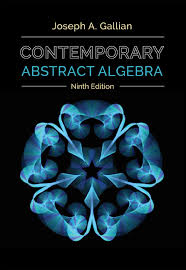Objective :
Ø The students can understand the various concepts related to the testing hypothesis and non- parametric methods.
Ø Students will learn how to apply the five step procedure for a test of hypothesis concerning a population mean when the sample size is large & small.
Ø Students will learn how to interpret the result of a test of hypothesis in the context of the original narrated situation.
Course Outcomes:
At the End of this Course Students will be able to :
CO 1: Correctly formulate a decision rule for testing a hypothesis.
CO 2: Understand the difference between one- and two-tailed hypothesis tests.
CO 3: Understand Type I and Type II errors
CO 4: Know how to use the test statistic, critical value, and p-value approaches to test a hypothesis.
CO 5 : Formulate null and alternative hypotheses for applications involving small sample and large sample tests.
CO 6 : Construct Most Powerful test using NP Lemma
CO 7 : Understand the advantages and disadvantages of Non-parametric tests (NPT)
CO 8 : Perform various one sample NPT such as test of randomness, Sign test , Signed Rank test and Various two-sample tests such as Median test, Mann - Whitney U test, etc

- Teacher: JAIMOLE CROSS
|
Course Objective |
|
|
1 |
To develop and understanding of the basic concepts of group theory and rings. |
|
2 |
To encourage precision in the use of mathematical language, and to develop further the ability to understand and produce proofs in an algebraic context. |
|
Course Outcomes |
|
|
|
After the completion of the course the student will be able to |
|
CO1 |
An exposure of well defined operations and recognise the algebraic structures. |
|
CO2 |
Use the subgroup criterion to prove that various subsets are subgroups of some given group |
|
CO3 |
Decide whether a given group is cyclic, and given a finite cyclic group, find a generator for a subgroup of a given order |
|
CO4 |
Understand the notions of homomorphism and isomorphism in groups |
|
CO5 |
Understand the notion of normal subgroup and determine whether a given subgroup is normal |
|
CO6 |
Identifying the set of axioms that define the algebraic structure of a ring |
|
CO7 |
Understand the notion of ideal and determine whether a given subset of a ring is an ideal |
|
CO8 |
Identifying the properties that determine that a mapping between rings is a homomorphism. Understand polynomial rings and their use to construct finite fields |

- Teacher: RAM PRASAD D
| OBJECTIVE OF THE COURSE: | |||||
| The objective of the course is to get an introduction to database management systems, with an emphasis on how to organize, maintain and retrieve information from a DBMS efficiently and effectively . | |||||
| COURSE OUTCOMES: | |||||
| By the end of the course, the student will
be able to: CO 1 : Understand what a database system is and its fundamental elements. CO 2 : Understand the basic concepts of relational data model and relational algebra. CO 3 : Design and build a simple database system. CO 4 : Write SQL command. CO 5 : Structure data using data models. CO 6 : Understand basic transaction processing concepts. CO 7: Apply various normalization techniques and thereby improving the database design. CO 8 : Gains awareness on data Security, concurrency control and design data bases with ensured data integrity. |

- Teacher: APARNA VIJAYAN